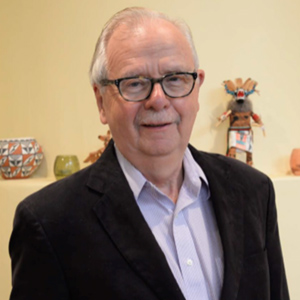FERC on Nov. 13 approved tariff revisions and modifications to the joint operating agreement between MISO and SPP that will enshrine a structural and cost-allocation framework for the five 345-kV projects in the RTOs’ $1.6 billion Joint Targeted Interconnection Queue (JTIQ) portfolio (ER24-2798, ER24-2825).
In a 4-0 decision (in which Commissioner Judy Chang did not participate), the commission found the proposed revisions to the RTOs’ generator interconnection processes and pro forma GI agreements in their respective tariffs and Joint Operating Agreement complied with its rules “by helping to ensure that interconnection customers are able to interconnect to the transmission system in a reliable, efficient, transparent and timely manner.”
FERC said the proposed allocation of 100% of the JTIQ portfolio’s cost to interconnection customers is consistent with the cost-causation principle and allocates costs at least roughly commensurate with estimated benefits. The commission said the JTIQ study addressed transmission system limits preventing the interconnection of future generation capacity, thus benefiting all interconnection customers.
“Interconnection customers are the primary beneficiaries of the JTIQ upgrades, and therefore the proposed allocation of 100% of the capital costs … to interconnection customers when fully subscribed is just and reasonable,” FERC said. “The RTOs also have shown that the JTIQ upgrades do not provide sufficient benefits for load in either RTO to qualify as transmission projects selected in the regional transmission plan for purposes of cost allocation.”
MISO and SPP will now take the JTIQ portfolio to their respective boards’ upcoming meetings for their approval. Both boards meet in December.
The RTOs expect a grant of up to $464.5 million in matching federal funds under the U.S. Department of Energy’s Grid Resilience and Innovation Partnerships (GRIP) program to offset about 25% of the portfolio’s capital costs. (See MISO, SPP Ditch 90/10 JTIQ Allocation After $465M DOE Grant.)
Commissioner Mark Christie wrote a concurring opinion, noting that the JTIQ projects would not have been selected in the RTOs’ regional transmission plans.
“These projects are not designed to serve load, i.e., consumers, with optimal solutions to identified reliability concerns or economic drivers,” he wrote. “Rather, the primary purpose of these projects is to provide interconnection customers — generation developers, primarily wind and solar — with more interconnection opportunities. Accordingly, it is appropriate that the primary funding for these projects is from the generation developers themselves, as they are the primary beneficiaries.”
Christie said the order establishes that the benefits to load meet the cost-causation principle, justifying the RTOs’ proposal that load provide backstop funding for the portfolio. He said the funding mechanism is only just and reasonable with the GRIP funding covering 25% of the capital costs.
“Without this funding, it would be unjust and unreasonable to allocate to load any of the [portfolio’s] costs,” he said. “These projects were not designed to serve load, plain and simple, and if there were no funding, the JTIQ proposal would not be acceptable.”
Aubrey Johnson, MISO’s vice president of system resource planning and competitive transmission, said in an email and on social media that the JTIQ is a “critical process” to add more generation.
“It provides certainty to interconnection customers near the SPP-MISO seam and enables lower-cost energy in each region,” he said in extending his appreciation for SPP’s “strong collaboration and innovative thinking” that led to the “first-of-its-kind framework.”
SPP’s Casey Cathey, vice president of engineering, said the grid operator is “thrilled” that FERC recognized the JTIQ’s long-term value and its future benefits to members and customers.
“We’ve had a successful partnership with MISO for many years and look forward to building on that success with the JTIQ initiative,” he said in an email. “These transmission projects will be a significant step toward eliminating barriers and improving the efficiency and reliability of transmission between our regions.”
The two RTOs began working on the JTIQ process in 2020 after several unsuccessful attempts to find joint projects to alleviate congestion on their seam. They conducted reliability, economic and generation-enablement studies and coordinated with stakeholders to develop transmission solutions to identify the JTIQ upgrades that unlocked generating facilities and aligned their interconnection processes to reduce restudies and delays.
MISO and SPP say the projects, focused on their northern seam, are expected to enable 28 GW in generation additions. They said the generation projects were stymied by the massive amounts of interconnection requests; the lack of current system capacity to accommodate the requests; and the significant incremental cost of upgrades that interconnected individual clusters that would otherwise be obligated to pay for the upgrades under the RTOs’ existing “but for” cost-allocation frameworks.
The backbone of network upgrades consists of five projects, cut down from the original seven:
-
- Bison-Hankinson-Big Stone South, 147 miles of new 345-kV lines in the Dakotas (MISO).
- Lyons Co.-Lakefield Junction, 80 miles of new 345-kV lines in South Dakota and Minnesota (MISO).
- Raun, a new 345/161-kV double circuit and rebuilt 161-kV lines near Omaha, Neb. (MISO, SPP).
- Auburn-Hoyt, new 345-kV lines in Nebraska (SPP).
- Epanding and rebuilding a 345-kV substation in Sibley, Iowa (SPP).
